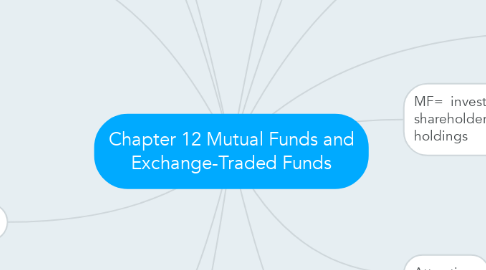Chapter 12 Mutual Funds and Exchange-Traded Funds
Jason Chinにより


1. Management Company
1.1. Open-End Investment Companies
1.2. Cloded-End Investment Companies
1.3. Exchange-Traded Funds(ETF)
1.4. Unit Investment Trust (UIT)
1.5. Real estate Investment Trust
1.6. Hedge Funds
2. Fees
2.1. Load Fund
2.2. No-load Fund
2.3. Low-Load Fund
3. Types of MF
3.1. Growth Fund
3.2. Aggressive Growth Fund
3.3. Value Fund
3.4. Equity-Income Fund
3.5. Balanced Fund
3.6. Growth-and-Income Fund
3.7. Bond Funds
3.8. Money Market Funds
3.9. Index Funds
3.10. Sector Funds
3.11. Socially Responsible Funds
3.12. Asset Allocation Funds
3.13. International Fund
4. MF Investor Service
4.1. Automatic Investment Plans
4.2. Systematic Withdrawal Plans
4.3. Phone Switching
4.4. Conversion Privileges
4.5. Easy Establishment of Retirement Plans
5. Uses of MF
5.1. Accumulation of Wealth
5.2. Storehouse of Value
5.3. Speculation and Short-Term Trading
6. Sources of Return of MF
6.1. Dividend income
6.2. Capital gains distributions
6.3. Change in Price/NAV
7. MF= investment program funded by shareholders that trades in diversified holdings
8. Attractions
8.1. Portfolio Diversification
8.2. Professional management
8.3. Ability to invest small amount
8.4. Service
8.5. Convinience
9. Drawbacks
9.1. Substantial Transaction Costs
9.2. Lower-than-Market Performance
10. Other Fees
10.1. Management Fee
10.2. Administrative costs
11. Selecting MF
11.1. Compare MF's investment objectives
11.2. Compare range of services offered
11.3. Source of information
11.3.1. Fund prospectus
11.3.2. The Wall Street Journal
11.3.3. Morning star Mutual Funds
